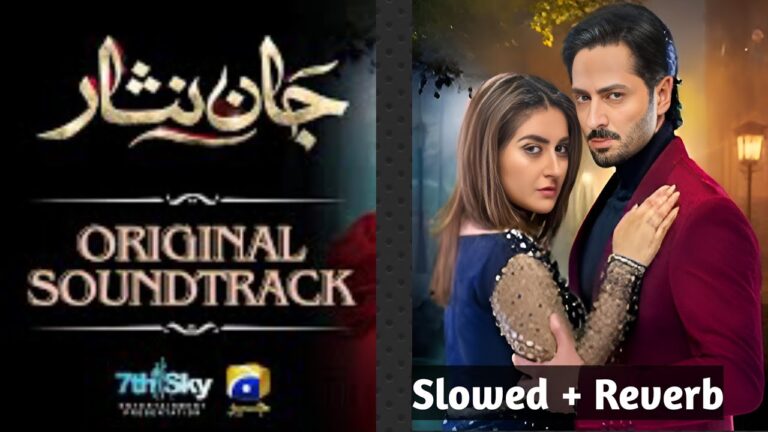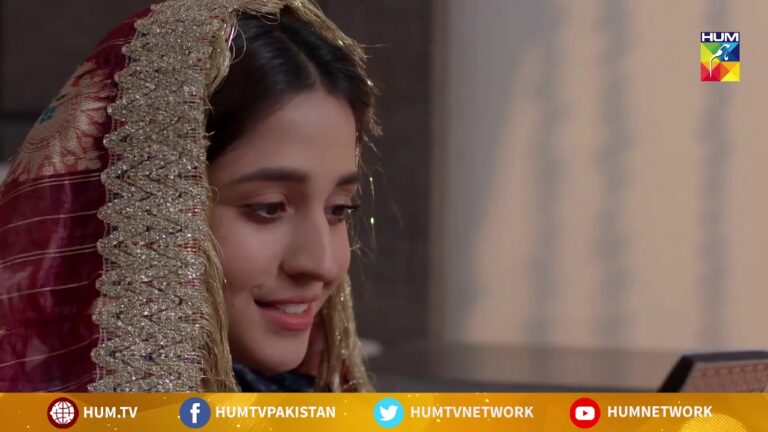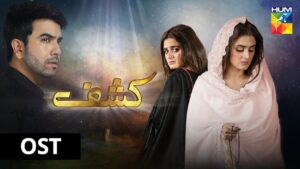Tarap Drama Review: Tarap (Urdu: تڑپ, lit. ”Craving”) is a 2018 Pakistani drama serial that captivated audiences with its blend of romance, emotional depth, and exploration of complex family dynamics. The narrative follows the journey of Mehreen (Ayeza Khan), a young woman grappling with loss, societal expectations, and the pursuit of true love. This review delves into the drama’s strengths and weaknesses, offering a comprehensive analysis of its impact on viewers.
A Story of Love, Loss, and Second Chances:
Mehreen is forced into an arranged marriage with Wali (Imran Abbas), a kind-hearted but reserved man, to fulfill her family’s financial obligations. While their relationship starts on a rocky note, they gradually develop a bond of friendship and respect. However, tragedy strikes as Wali dies in an accident, leaving Mehreen devastated and alone.
Years later, Mehreen encounters Rushna (Sarah Khan), a young woman with a vibrant spirit and a troubled past. They form an unlikely friendship, and Mehreen becomes a source of support and guidance for Rushna. Through this connection, Mehreen also encounters Sahil (Sami Khan), Rushna’s childhood friend, who harbors unrequited feelings for her.
As Mehreen and Sahil interact, a connection begins to develop between them. However, their budding relationship faces numerous challenges, including societal disapproval due to their differing social statuses and Mehreen’s past experiences. The narrative explores themes of love, loss, societal pressures, and the courage to pursue happiness, leaving viewers invested in the characters’ journeys.
Strengths of the Drama:
-
Compelling Characters: The characters are the heart of Tarap’s success. Mehreen, a strong and independent woman navigating loss and societal expectations, resonates with viewers due to her vulnerability and resilience. The supporting characters, including Wali, Rushna, and Sahil, add depth and complexity to the narrative, showcasing diverse perspectives and personal struggles.
-
Emotional Depth: Tarap is a deeply emotional drama that explores themes of grief, love, and self-discovery. The narrative tackles sensitive topics with care and sensitivity, evoking empathy and understanding in viewers. The characters’ emotional journeys are portrayed realistically, allowing viewers to connect with their joys and sorrows.
-
Beautifully Crafted Narrative: The drama unfolds at a well-paced and engrossing tempo. The narrative seamlessly blends moments of joy, heartbreak, and triumph, keeping viewers engaged throughout the story. Flashbacks are effectively used to reveal characters’ past experiences and motivations, adding depth to their development.
-
Social Commentary: While the drama primarily focuses on the characters’ personal journeys, it subtly addresses social issues prevalent in Pakistani society. It sheds light on the complexities of arranged marriages, societal pressures on women, and the importance of breaking free from societal constraints to pursue true happiness.
Weaknesses of the Drama:
-
Overused Tropes: While the overall narrative is captivating, the drama utilizes some recurring tropes commonly found in Pakistani dramas. These elements, such as misunderstandings leading to conflict and societal disapproval as a plot device, might feel slightly predictable to seasoned viewers.
-
Melodramatic Elements: At times, the drama relies on melodramatic elements to heighten emotional impact. While this might resonate with certain viewers, others might find it excessive and hindering the narrative’s flow.
Delving Deeper into Tarap: Symbolism, Character Nuances, and Social Commentary
Building upon the initial review, let’s delve deeper into specific aspects of Tarap:
Exploring Symbolism and Artistic Choices:
Tarap utilizes various symbolic elements to enhance the narrative’s depth and emotional impact. The recurring motif of rain symbolizes the characters’ cleansing of emotional burdens and the possibility of new beginnings. Mehreen finds solace and release during moments of rain, representing her journey of healing and moving forward from past trauma.
The contrasting use of colors is significant. Mehreen’s initial wardrobe choices are muted and subdued, reflecting her emotional state and societal restrictions. As her character evolves and embraces new possibilities, her clothing becomes brighter and more vibrant, symbolizing her newfound independence and spirit.
The director utilizes close-up shots to capture the emotional nuances of the characters, allowing viewers to connect with their internal struggles and triumphs. Slow-motion sequences are used effectively during pivotal moments, emphasizing the emotional weight of the scene and allowing viewers to fully absorb the characters’ emotions.
Beyond Romance: Exploring Complex Family Dynamics and Societal Pressures:
While the narrative explores Mehreen and Sahil’s love story, Tarap delves deeper into the complexities of family dynamics and societal pressures. Mehreen’s relationship with her family is strained due to their differing perspectives on love and marriage. The drama portrays the emotional manipulation and societal pressure placed on women by their families, highlighting the struggles faced by individuals seeking to defy traditional expectations.
Wali’s character, despite his untimely demise, plays a crucial role in the narrative. He represents the possibility of finding love and support within arranged marriage, challenging the negative connotations associated with the practice. His presence and positive influence shape Mehreen’s growth and open her heart to the possibility of love again.
Beyond the Screen: Legacy and Social Impact:
Tarap sparked important conversations about societal expectations, particularly regarding love, marriage, and individual choice. The drama challenged traditional narratives that limit women’s choices and highlighted the importance of open communication and understanding within families.
Furthermore, the drama resonated with a global audience by offering a relatable narrative of overcoming adversity, pursuing love, and defying societal pressures. Mehreen’s journey serves as an inspiration for individuals facing societal limitations and personal challenges, offering a message of hope and encouragement to embrace self-belief and fight for happiness.
Overall Impact:
Despite its minor shortcomings, Tarap remains a compelling and impactful drama. Its exploration of emotional depth, relatable characters, and thought-provoking themes leave a lasting impression on viewers. The drama encourages viewers to challenge societal norms, embrace self-discovery, and believe in the power of second chances.
Beyond the Screen: Legacy and Social Discourse:
Tarap sparked important conversations about societal expectations, particularly regarding marriage and relationships. The drama challenged traditional narratives that limit individual choices and highlighted the importance of pursuing personal happiness and fulfillment.
Furthermore, the drama resonated with a global audience by offering a relatable narrative of overcoming loss, societal pressures, and finding love. The themes of resilience, self-belief, and the courage to pursue happiness transcend cultural boundaries and offered a captivating viewing experience for viewers from diverse backgrounds.
Conclusion:
Tarap, with its strengths and weaknesses, offers a captivating and emotionally charged viewing experience. The exploration of complex emotions, relatable characters, and the inspiring message of hope and resilience are central to the drama’s lasting impact. While certain elements might appear predictable or melodramatic, the overall narrative encourages viewers to reflect on societal expectations, embrace personal growth, and celebrate the transformative power of love and second chances.
By incorporating specific examples from the drama and further details about your personal interpretation, you can personalize this review and create a more unique and engaging analysis.










+ There are no comments
Add yours